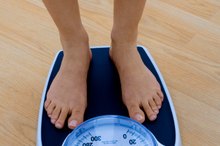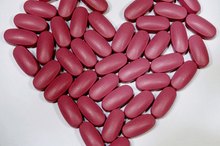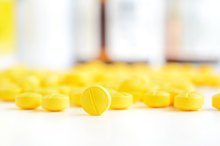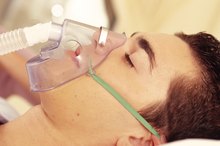How to Get Off Statins
Statin drugs such as Lipitor, Crestor and Zocor are among the most commonly prescribed drugs in the world. Doctors start patients on statins when total cholesterol and low-density lipoprotein cholesterol--the"bad" cholesterol--are too high. Rarely, side effects occur that result in people needing to discontinue statins. Others decide they do not want to take a drug for the rest of their lives, and need a process for getting off. However, since statins are more effective than the alternatives, more than one of the alternatives will need to be combined in order to achieve the same cholesterol-lowering goal, and the whole process must be monitored by a physician.
Get your doctor's permission. Your physician who prescribed the statin drug needs to be aware that you want to stop. Schedule an appointment to review the lifestyle and/or drug steps you intend to take before stopping the statin. Review the plan together and agree on a timeline.
Zetia & Weight Loss
Learn More
Start lifestyle changes. The National Cholesterol Education Program recommends exercising at least 30 minutes a day, five or more times a week, restricting dietary cholesterol to less than 200 mg/day and saturated fat to less than 7 percent of total calories, and losing weight. Adding foods either fortified with phytosterols or psyllium, and those that contain natural soluble fiber such as whole oats and barley, are all proven means of moderately lowering cholesterol.
Discontinue the prescription statin once the therapeutic lifestyle changes are in place for about two months. Six to eight weeks later, your blood lipids should be tested by your physician to see how successful the switchover has been.
Medications That Cause Gallstones
Learn More
Consider either adding a non-statin drug or restarting the statin if total cholesterol and/or LDL cholesterol have moved back into the risk range as determined by your physician. If partial control was achieved, then a low-dose statin may suffice. Non-statin drugs include niacin, ezetimibe and cholestyramine. Retest blood six to eight weeks after this second set of interventions.
Tips
Know what your cholesterol and LDL-cholesterol were before you started taking the statin drug and after. If you do not have this information on file at home, request it from your doctor's office. Your doctor should be able to recommend a Registered Dietitian who can review your plans for reducing saturated fat and cholesterol in your diet, and adding soluble fiber and phytosterols.
Warnings
The discontinuation of a statin drug may result in an increase in C-reactive protein, an indicator of increased heart attack risk. Avoid alternative medicine products such as red yeast rice or non-prescription niacin that claim or infer the ability to lower cholesterol.
Related Articles
References
- National Cholesterol Education Program: High blood cholesterol what you need to know
- “Iran Journal of Kidney Disease”: C-reactive protein level following treatment and withdrawal of lovastatin in diabetic nephropathy
- Gillett RC Jr, Norrell A. Considerations for safe use of statins: liver enzyme abnormalities and muscle toxicity. Am Fam Physician. 2011 Mar 15;83(6):711-6.
- Lacy CF, Armstrong LL, Goldman MP, et al. Lexicomp's Drug Information Handbook. 26th ed. Hudson, OH:Lexi-Comp Inc.; 2017.
- Dipiro JT, Talbert RL. Pharmacotherapy: A Pathophysiologic Approach. 10th ed. New York, NY: McGraw-Hill Education. 2017.
Resources
Writer Bio
David A. Mark is a nutrition science consultant in the sports nutrition, functional food and dietary supplement industries. Mark has been writing for health and trade publications since 2004. He earned his doctorate in nutritional biochemistry from the Massachusetts Institute of Technology in 1981.








